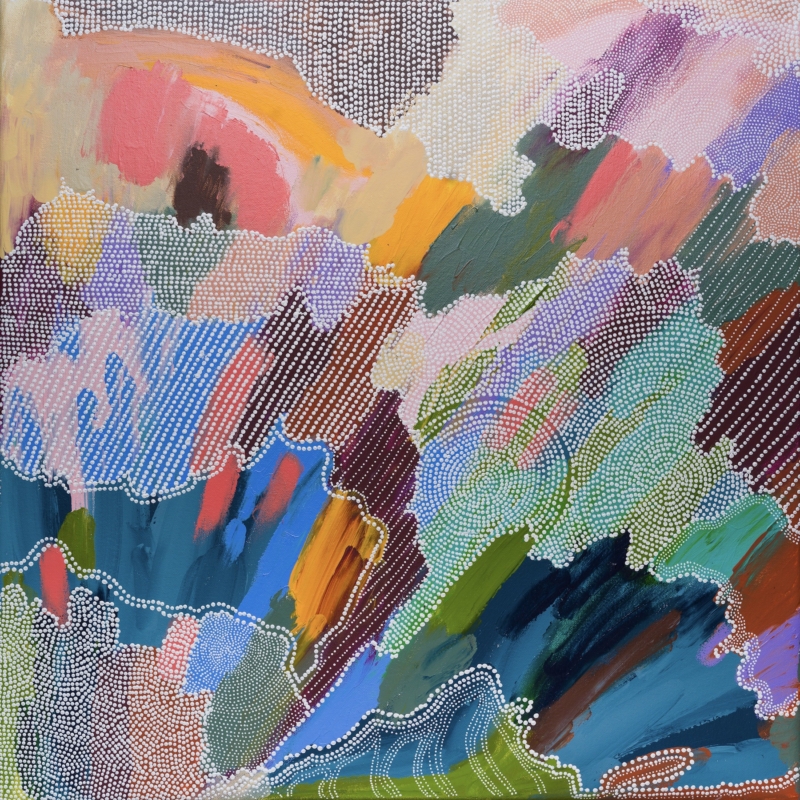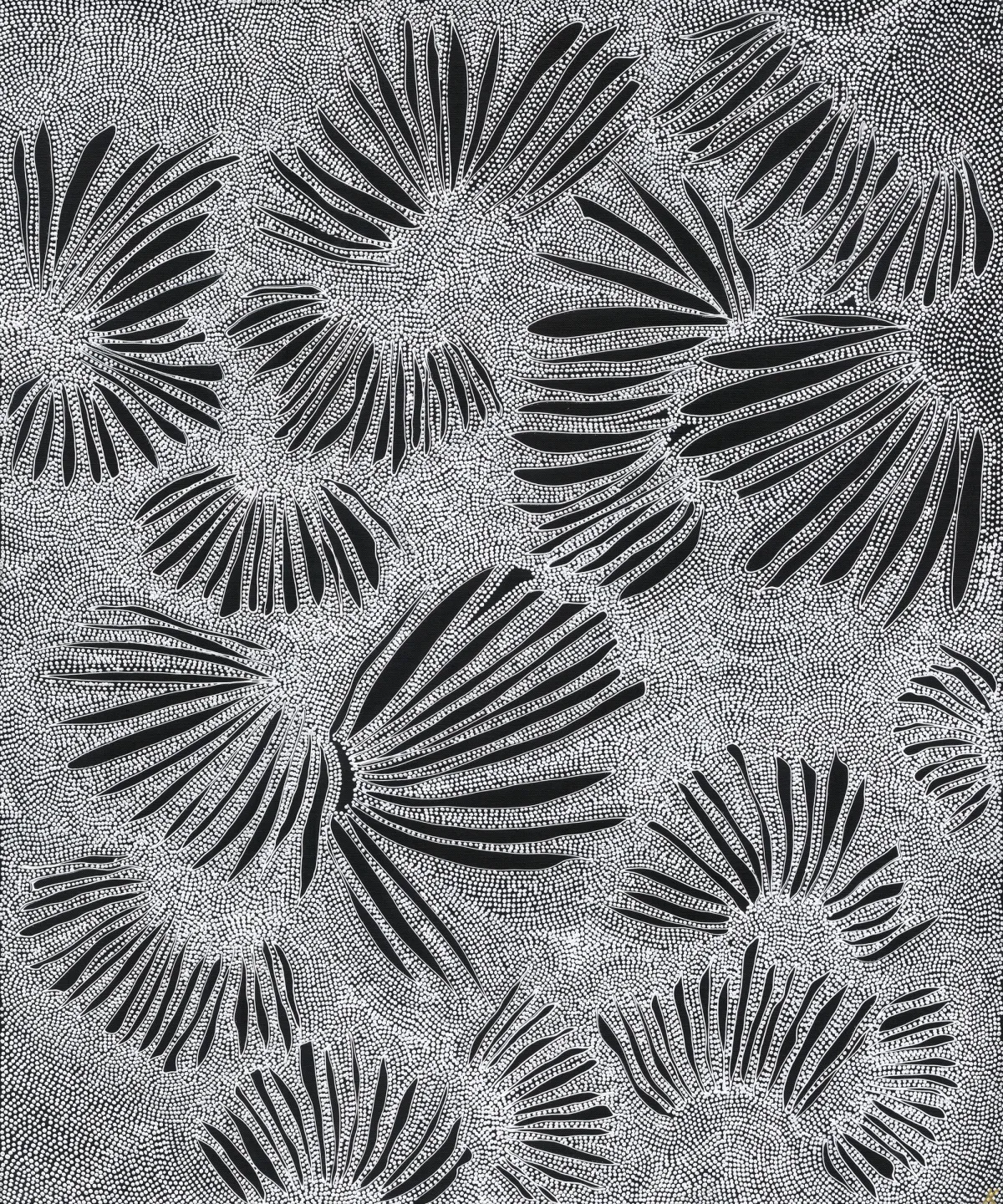
black AND white
ARTIST STATEMENT
In this year of reflection and reform, it’s hard to sit in the grey area. There is just black AND white.
In this collection of works I tell truth, reclaim story and share culture that has long been taken away from my Gadigal people.
We’ve been colonised not once, but twice.
Using only black AND white acrylic paint, with the timeless practice of ochre milling and incorporating my own natural pigment paints, I explore this very racially charged theme of being both black AND white in the year of The Voice.”
Black AND white is a celebration. A moment in time to pause, acknowledge and honour the Gadi; our customs, our adornment, the cicatrices and ochre markings present on our bodies and our grace. These paintings recognise our existence, a physical reference to our being and strength. By looking to the past, we determine our future.
They are joy!
Healing intergenerational trauma through reclamation and restoration of kinship connections are critical. Our people are hardwired for connection; isolation and rejection from community causes a grief that cannot be healed.
DYIN BANGADA didactic:
Gadigal women have some of the most beautiful jewellery and adornment recorded. This repeating pattern is my representation of the Gawulgung (Kangaroo) Dara( teeth) necklace that could also be worn as a chaplet around the forehead. These necklaces were most often only made from incisor teeth only, so would be a true labour of love to create given each Roo only had 2 incisor teeth and these Bangada could include up to fifty teeth.
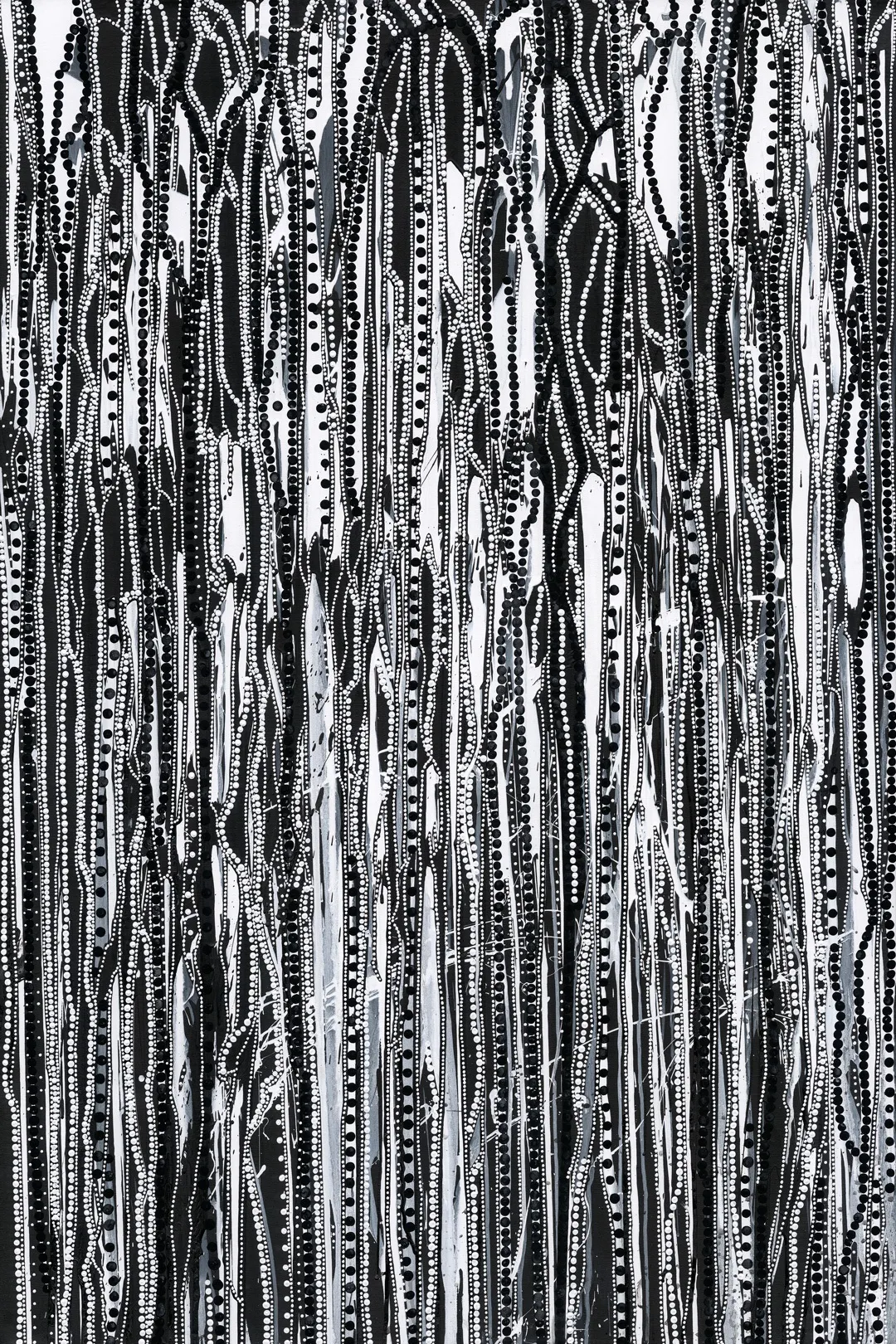
In Gadigal stories we believe that the creator spirit Biame was feminine. She slept laying on her side in the Cumberland plains and awoke to push herself back to create the mountains and pushed out her legs to create our great waterways. When she was done she perched at Garangal as Pelican (of the same name) and took flight to Kati Thanda (Lake Eyre) to create our songline to our brothers and sisters of the Arabana all the way down in South Australia and connects us to mobs in the interior by the breeding cycles of the Pelican.’

Waranjam is part of the ‘Raining Series’ as viewed from my place in bed, whilst pondering Wiyanga (motherhood), Dyin (womanhood) and what it’s like to be me. Many Wiyanga feel a stronger connection to Country and Culture after the birth of a child, and for me this piece explore themes of renewal and strength in my Culture, in my Blakness and the extraordinary connection I have to my ancestral homelands. As Gadi, I am the Country and it is me; we share spirit, life and love and this my homage and respect to her.
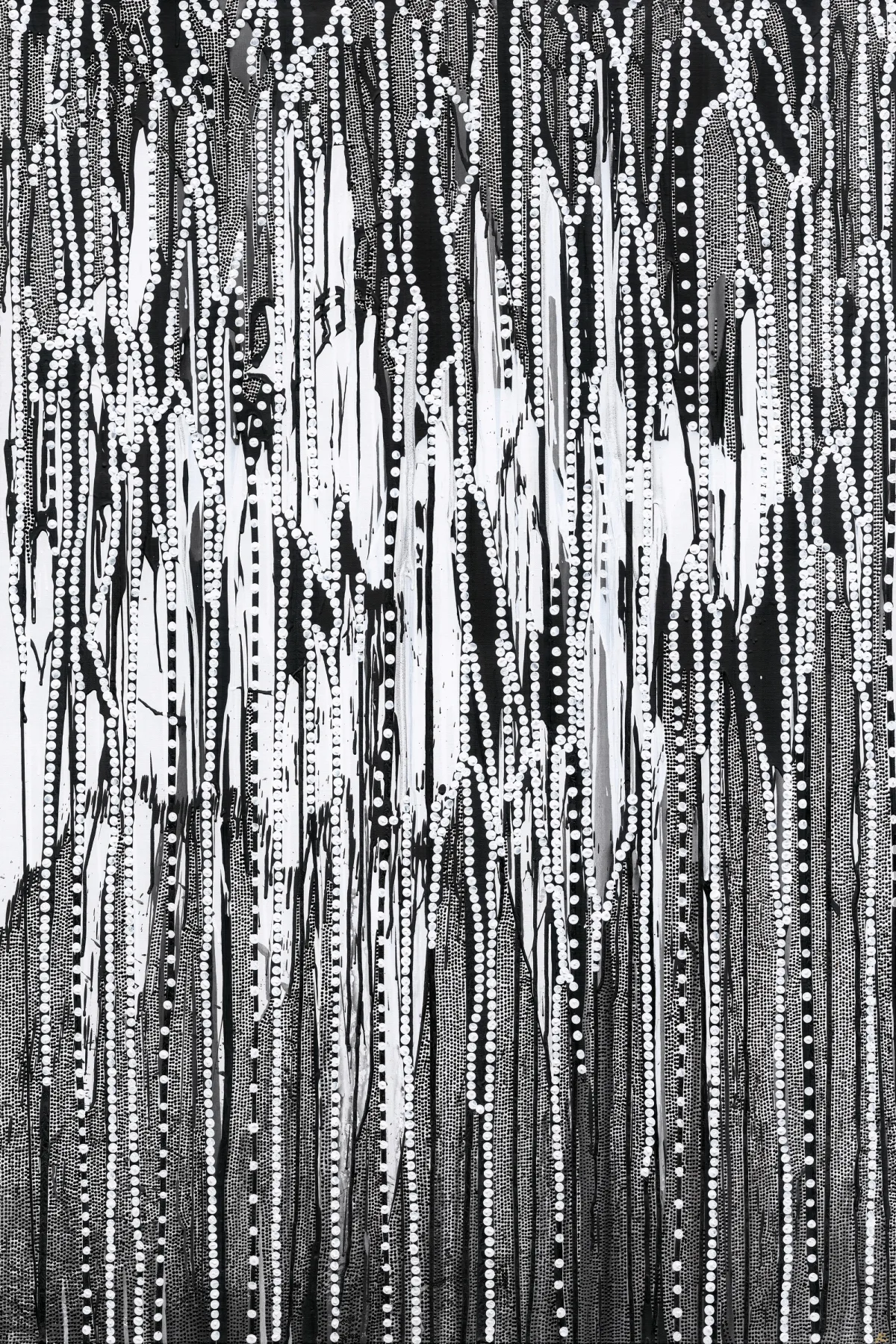
As North Head is sacred to Garanga and Koraji, South Head is sacred to the Gadi.
It is this headland we lived in and around. Our Summer camps dotted the sheltered bays and rock overhangs of the harbour, but it was in and around Rushcutters Bay, Camp Cove and todays Watsons Bay that our ancestors were alive to their earnest and humble living. The late great matriarch Cora Gooseberry was said to run the Watsons Bay camp with a loud voice and stern glare over her clay pipe.

Raining Series of works as viewed from my place in bed, whilst pondering Wiyanga (motherhood), Dyin (womanhood) and what it’s like to be me. Many Wiyanga feel a stronger connection to Country and Culture after the birth of a child, and for me this piece explore themes of renewal and strength in my Culture, in my Blakness and the extraordinary connection I have to my ancestral homelands.
Through my eyes, this is how I see Gadigal Ngura.
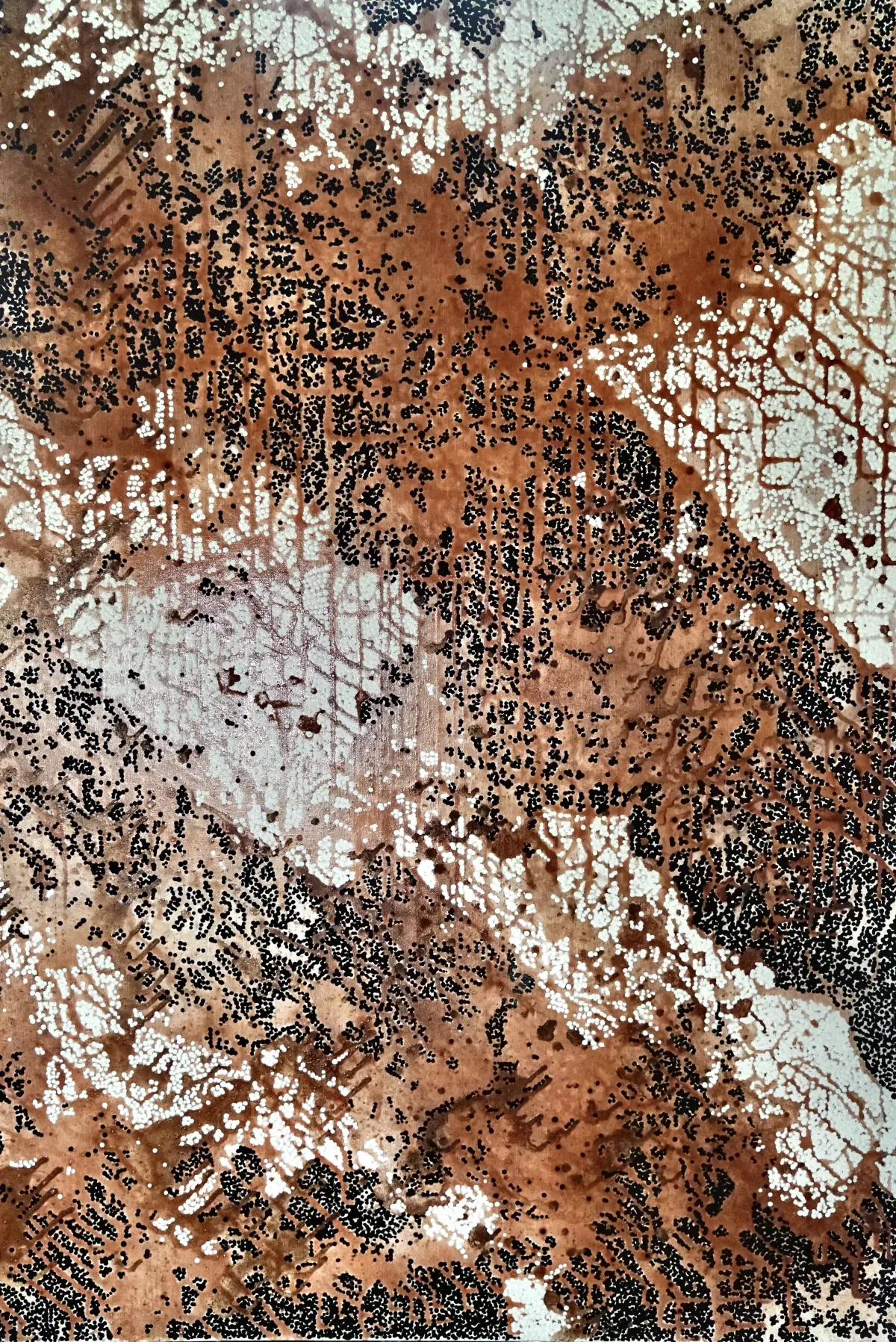
Raining Series of works as viewed from my place in bed, whilst pondering Wiyanga (motherhood), Dyin (womanhood) and what it’s like to be me. Many Wiyanga feel a stronger connection to Country and Culture after the birth of a child, and for me this piece explore themes of renewal and strength in my Culture, in my Blakness and the extraordinary connection I have to my ancestral homelands.
Imagine standing on this point, the rain lashing your face as you watch an almighty Sperm Whale proceed up the Harbour to where the current Harbour Bridge stands today. She is heavy with calf and has chosen this deepest spot in this protected harbour to give birth to her giant offspring. The labour, like ours, is long, she is tired, but she has an innate understanding Ngura will keep her safe. Gawura (Whale) is a very special animal to us Gadigal, we kept her safe.
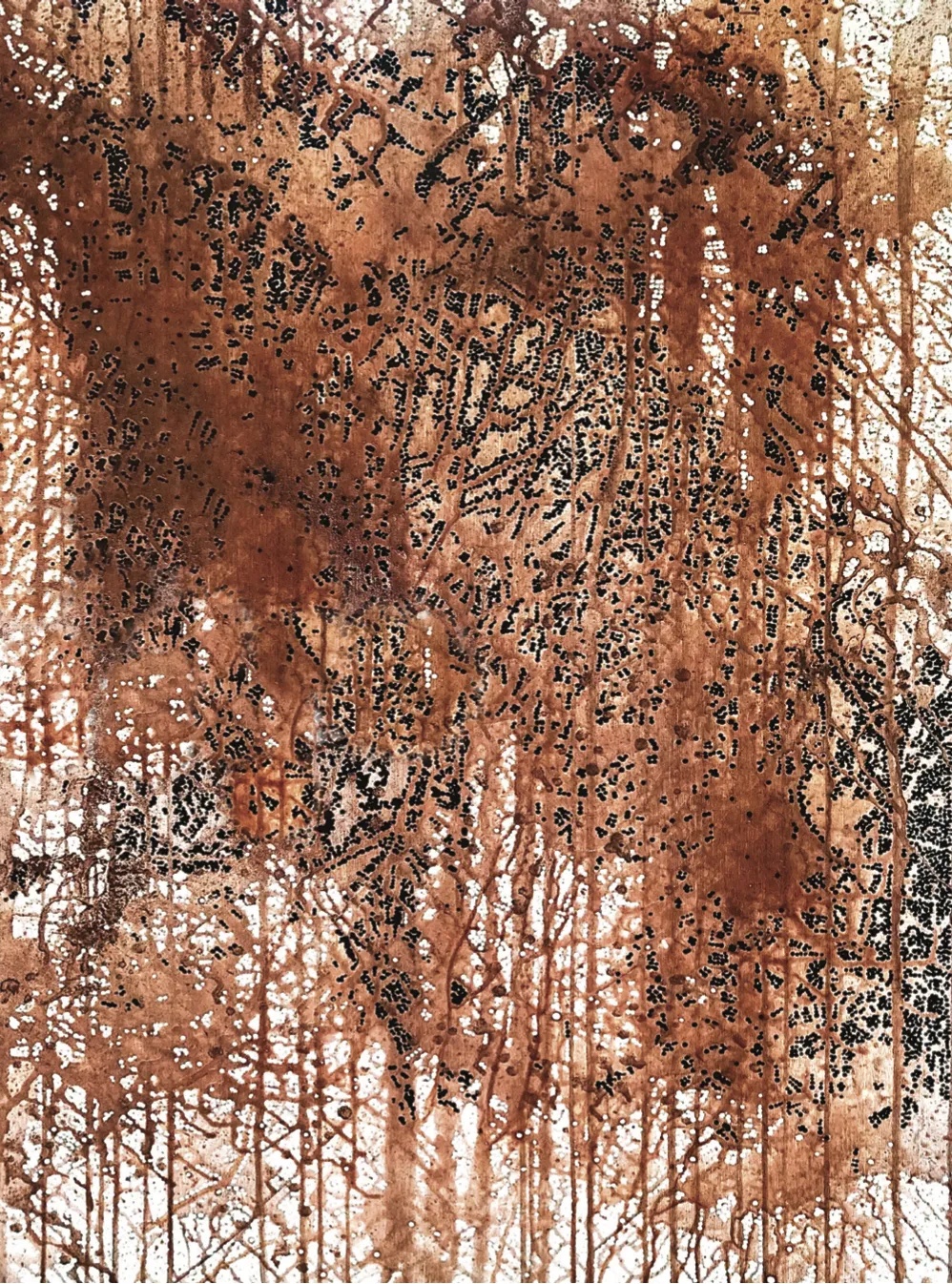
Raining Series of works as viewed from my place in bed, whilst pondering Wiyanga (motherhood), Dyin (womanhood) and what it’s like to be me. Many Wiyanga feel a stronger connection to Country and Culture after the birth of a child, and for me this piece explore themes of renewal and strength in my Culture, in my Blakness and the extraordinary connection I have to my ancestral homelands.
This place has long been a place to view the world go by. Governor Lachlan Macquarie named this special place after his beloved wife, who would walk to this spot from their home each day, but never ventured past it. We however call it Yurun. A place where one can see almost every point and headland in the harbour. I sit here, no the Lady’s stone chair, but out on the rocks and day dream I see the thin smoke of Cammeraygal fires lit North Side. I also sometimes see the dead convicts left rotting on spires as warning to all, on pinchgut island (Fort Denison) and wonder what my mob thought of how the Colony treated its dead.
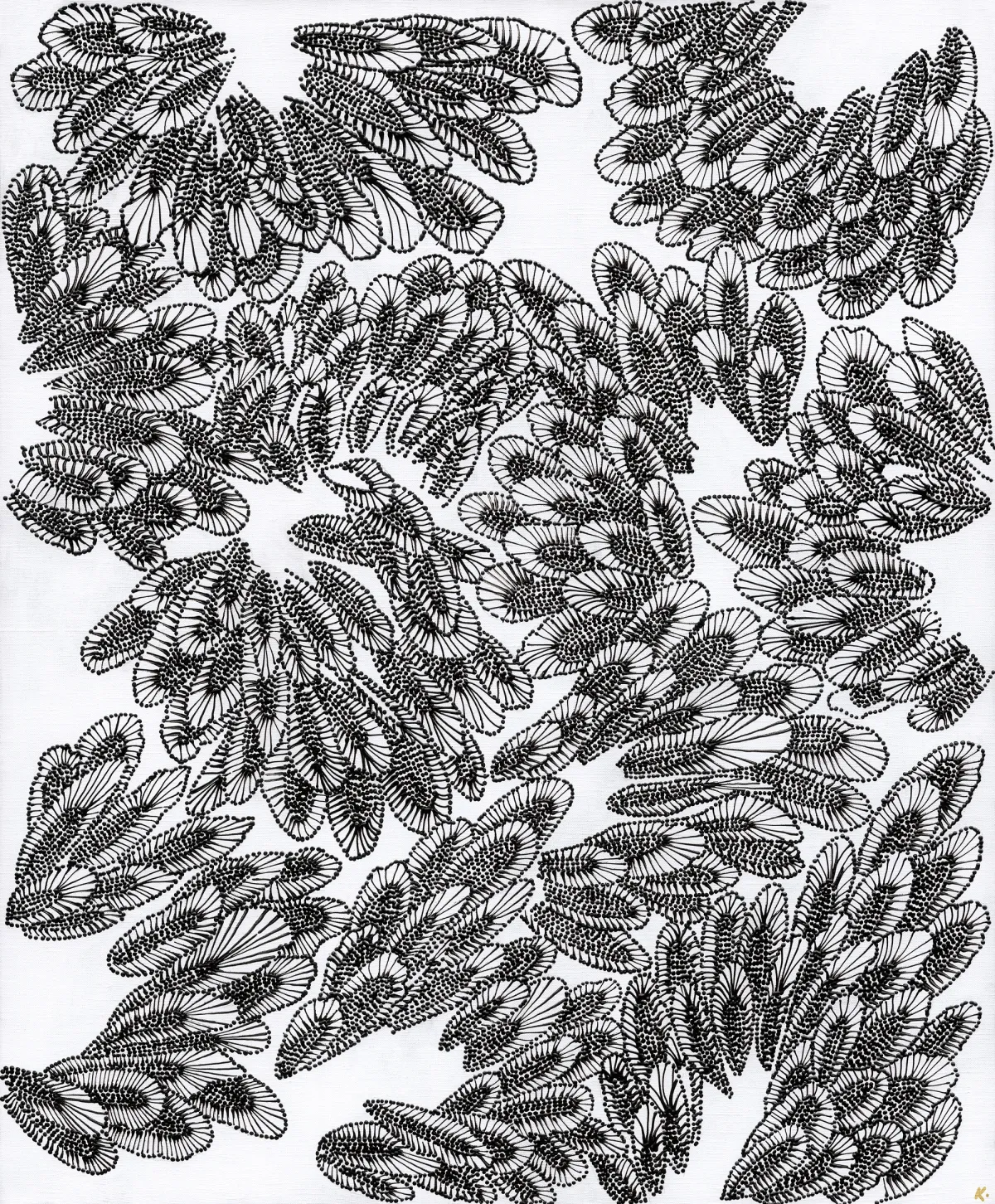
Gadigal women have some of the most beautiful jewellery and adornment recorded. This repeating pattern is a representation of a beautiful drawing titled “35. A woman of New South Wales” its author unknown and woman’s name omitted. The women is likely Gadigal or Bidjigal by her facial structure and her adornments. This tradition of ornamentation was as much a small vanity as it was a way to tell where someone is from and who they know by their trading in such small but exquisite items. These Dyin Bangada have been forgotten but are not lost.
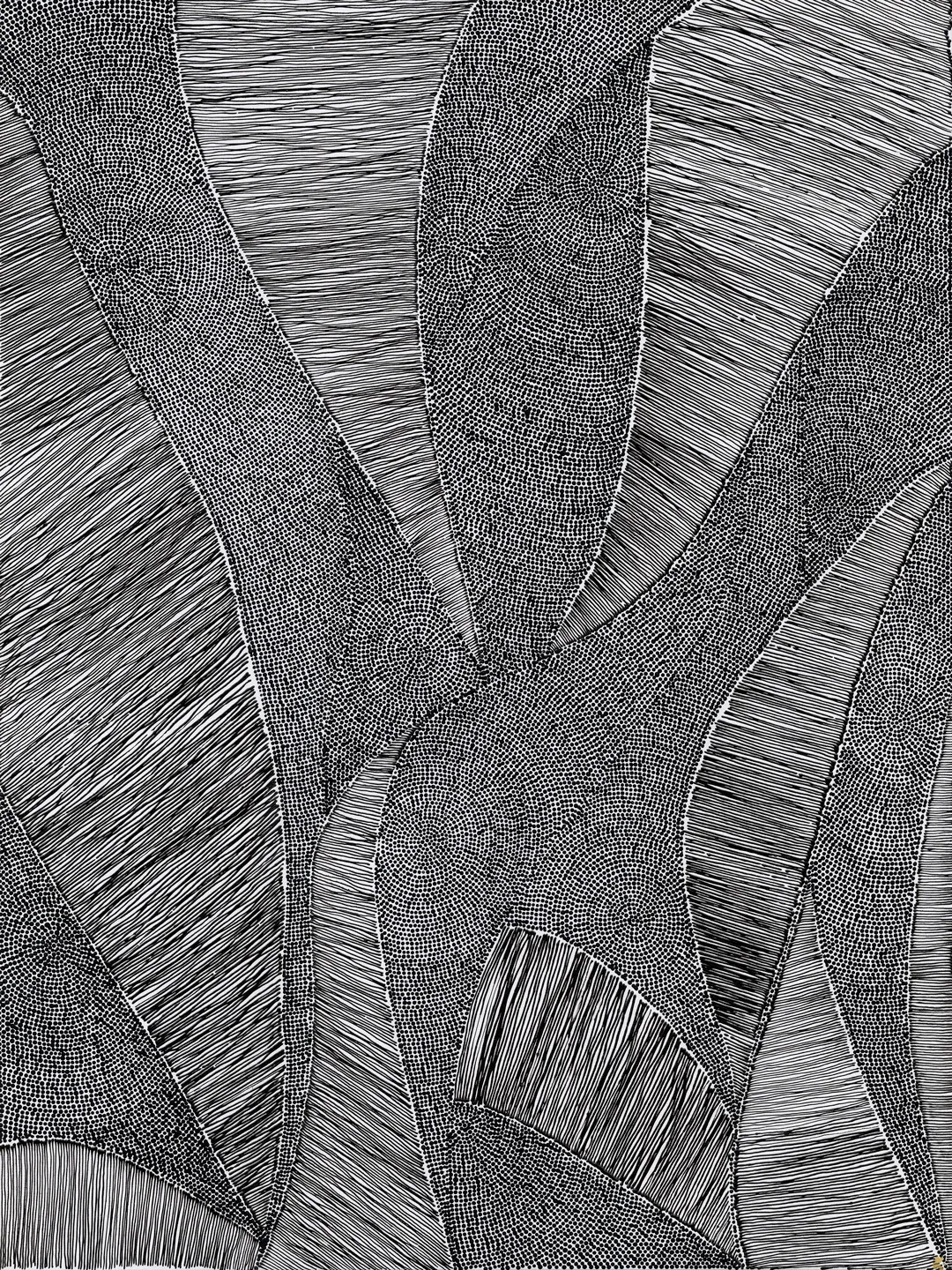
The Port Jackson Painter (1788 - 1792) created a series of small Gouache paintings depicting our Gadi men in their “paint up” states.These patterns are intricate and detailed. Using predominantly white ochre for Corroberee and yalabi dayalung (Bora Ceremony) and red ochre for war.These traditional patterns aim to revive these stories on contemporary surfaces.

The Port Jackson Painter (1788 - 1792) created a series of small Gouache paintings depicting our Gadi men in their “paint up” states.These patterns are intricate and detailed. Using predominantly white ochre for Corroberee and yalabi dayalung (Bora Ceremony) and red ochre for war.These traditional patterns aim to revive these stories on contemporary surfaces.

My people, the Gadigal of Sydney lived on the water, for the water, and respected all that the water had to offer. Pippis are one of our sustainable life sources of food and are important today more than ever as they help to date and document my mobs existence, travel and work via their findings in shell hidden from Bondi to Balmain.

My people, the Gadigal of Sydney lived on the water, for the water, and respected all that the water had to offer. Pippis are one of our sustainable life sources of food and are important today more than ever as they help to date and document my mobs existence, travel and work via their findings in shell hidden from Bondi to Balmain.
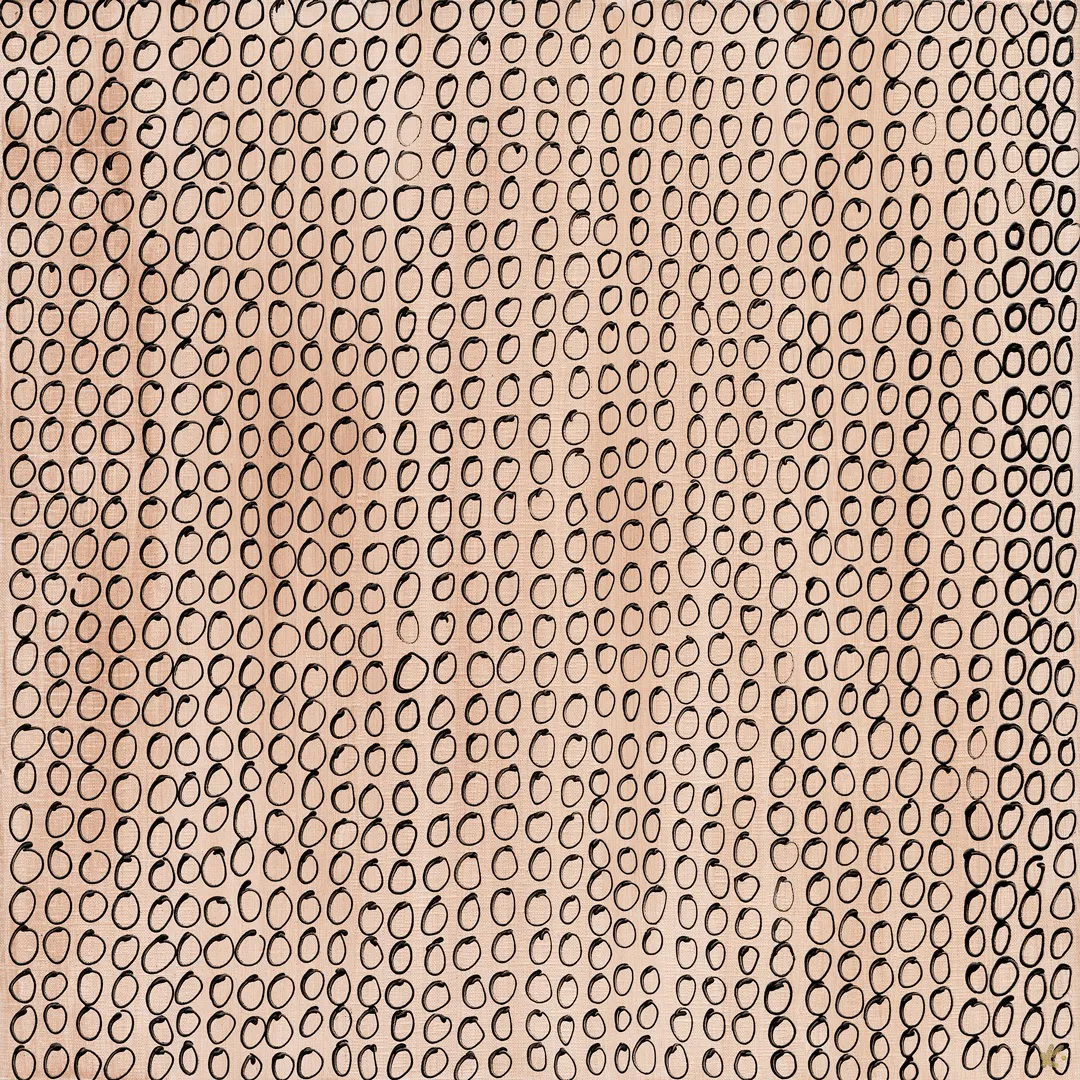
My people, the Gadigal of Sydney lived on the water, for the water, and respected all that the water had to offer. Pippis are one of our sustainable life sources of food and are important today more than ever as they help to date and document my mobs existence, travel and work via their findings in shell hidden from Bondi to Balmain.
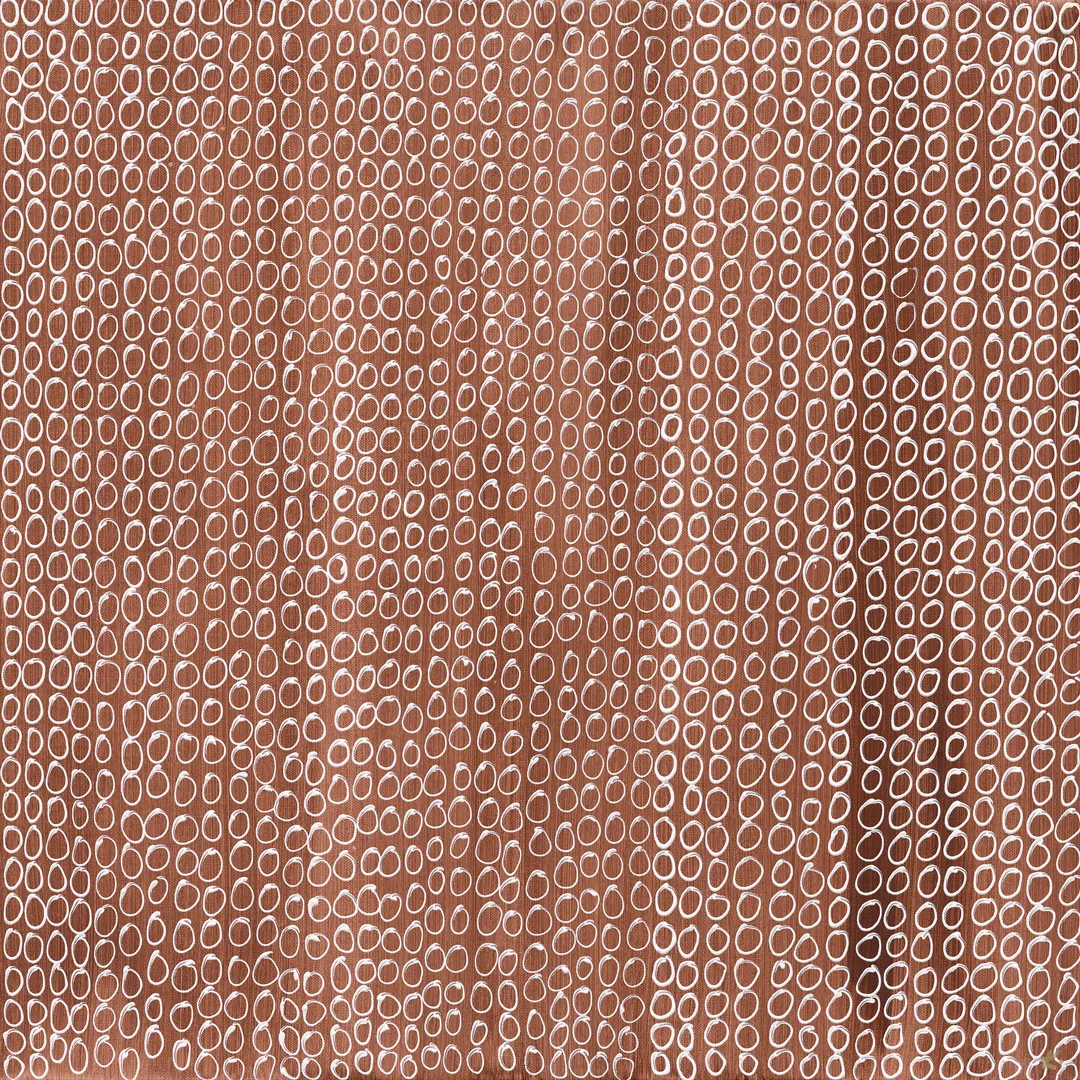
My people, the Gadigal of Sydney lived on the water, for the water, and respected all that the water had to offer. Pippis are one of our sustainable life sources of food and are important today more than ever as they help to date and document my mobs existence, travel and work via their findings in shell hidden from Bondi to Balmain.

Whilst in-residence at Sir Sidney Nolan Trust in Wales, I spent the greatest part of my 6weeks in Nolan’s very own reading room flicking through the pages marked and annotated by the man himself. To say he had an avid interest in Aboriginal politics, welfare and the philosophical dilemma the great Australian Silence had on generations of white and black people was incredible.
It was in his vast library of first edition books a story of our Gadigal Dyin (Gadigal women) first started to reveal itself to me. And it was here, 17,000km from home, I found us.
This painting represents a time-honoured weaving technique used for expendable fishing baskets.
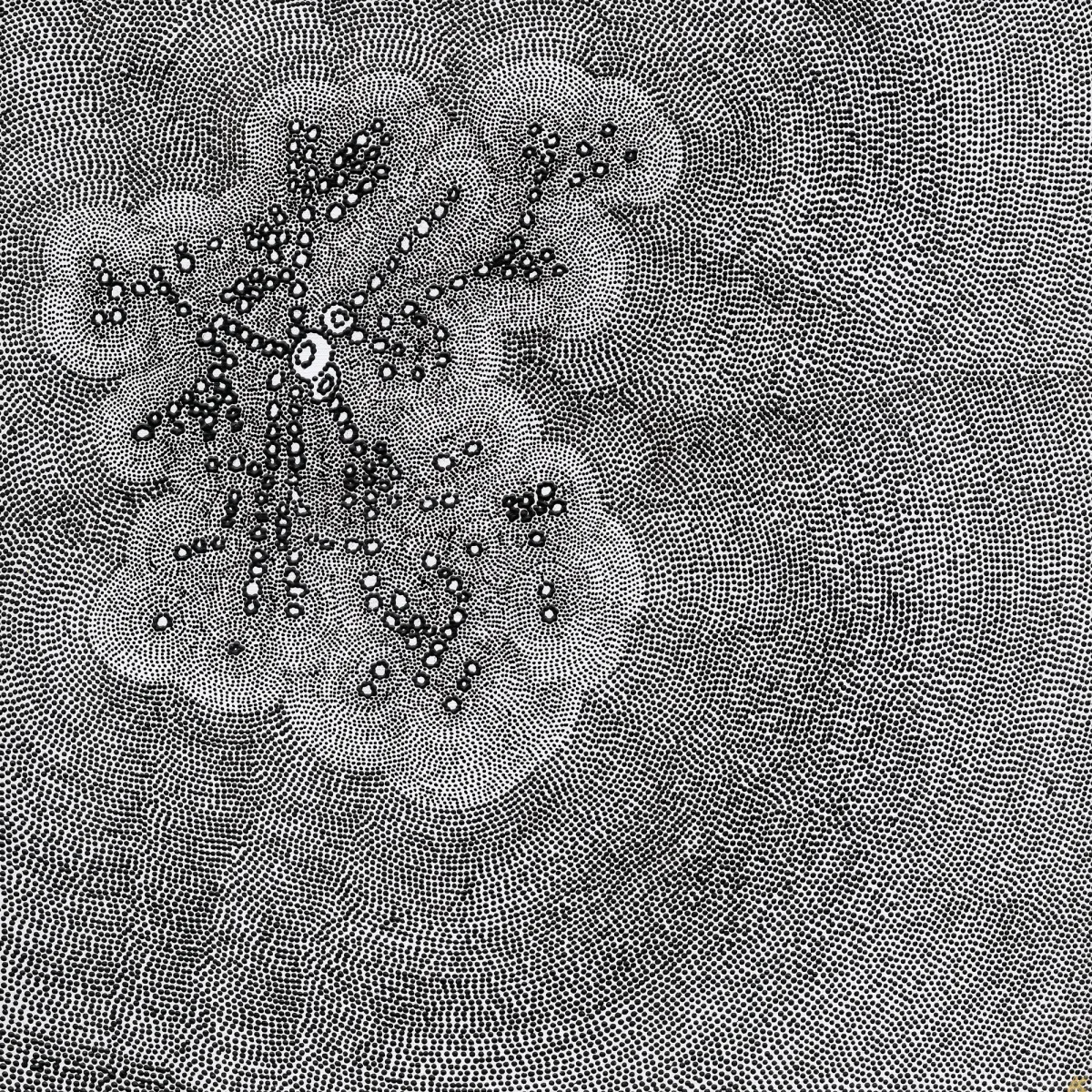
We Gadi were almost entirely extinguished, but our resilience, strength and ability to survive at all odds provides me as an artist some of my most fertile inspiration. From but few descendants we are here on Country proudly today advocating for our Culture.
It’s a cliche, but from little things, big things grow.

We Gadi were almost entirely extinguished, but our resilience, strength and ability to survive at all odds provides me as an artist some of my most fertile inspiration. From but few descendants we are here on Country proudly today advocating for our Culture.
It’s a cliche, but from little things, big things grow.
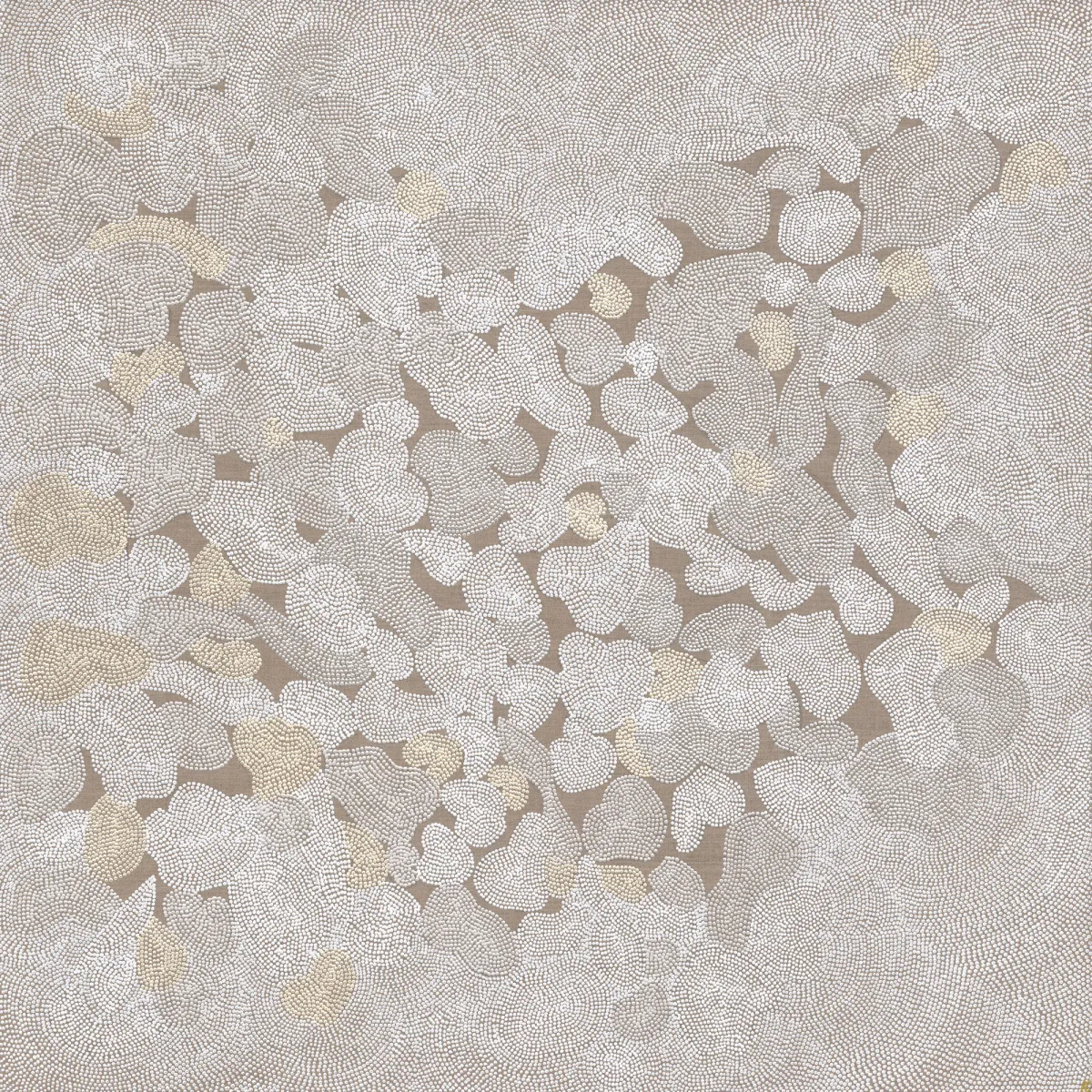
Yarra, particularly the Yarra now called Eucalyptus pulverulenta was used by the Gadi as the antiseptic and anaesthetic cure-all. It’s long stems filled with silver blue heart shaped leaves were collected by women and laid in saltwater birthing places. This would ensure a clean and sterilised birthing situation and reduce risks of post-part I’m infection.
The tree itself emits a beautiful red crystal looking sap. When the tree is ‘bled’ the sap was lead to harden on a rock, turning it to a stone. This was then grind down into powder and applied to any all open would to avoid infection. There is evidence of this method being the sole antiseptic and anaesthetic used in the Sydney regions tooth evolution ceremonies and in keeping cicatrices scars clean.
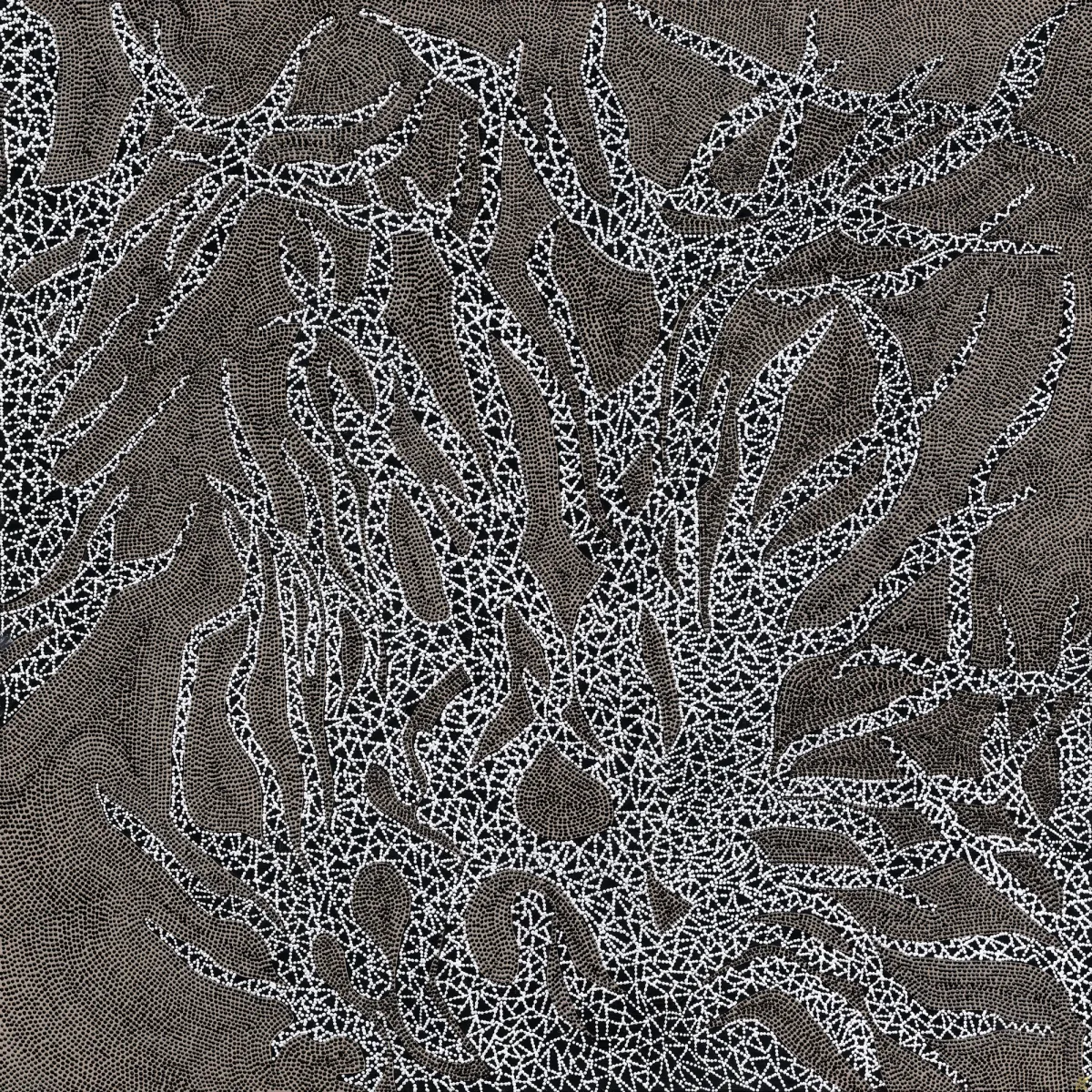
Waraburra was one of the native ingredients that kept the Colony alive in the early years of rations and malnutrition. Gadi people introduced the plant to the convicts. Its leaves are refreshing to chew, and whether enjoyed this way or stepped as a tea substitute the health benefits are incredible. Traditionally, the leaves of False Sarsaparilla are crushed and used to make a tea to relieve toothaches, sore throats, and maintain healthy digestion. The tea was also found to quell the effects of scurvy which was rife amongst the early Colony. It’s interesting to ruminate on the generosity of the Gadi, that generosity of spirit saved lives and set the path we’re on today. Genteel Gadi. Graceful Gadi, Generous Gadi.
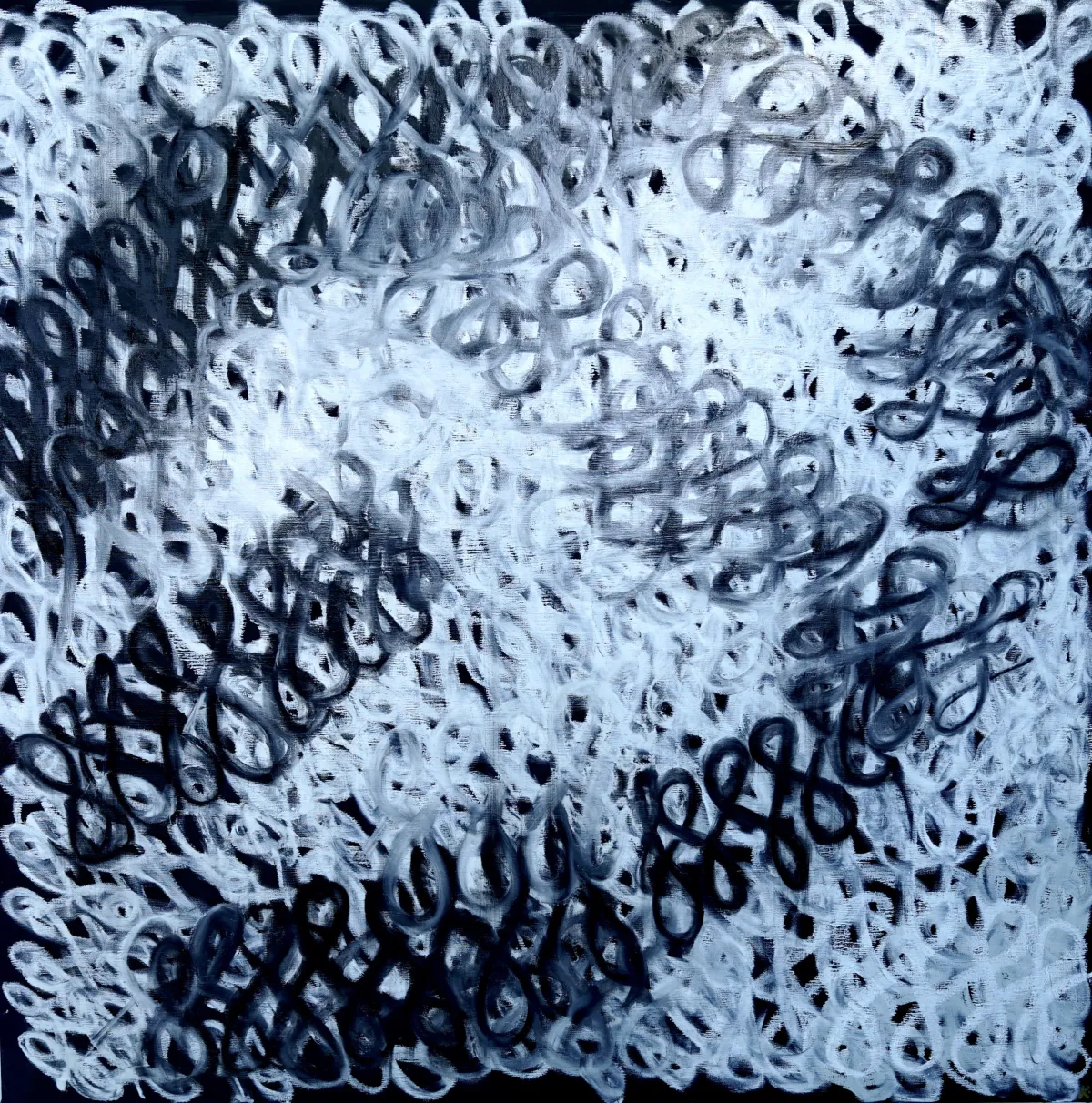
Whilst in-residence at Sir Sidney Nolan Trust in Wales, I spent the greatest part of my 6weeks in Nolan’s very own reading room flicking through the pages marked and annotated by the man himself. To say he had an avid interest in Aboriginal politics, welfare and the philosophical dilemma the great Australian Silence had on generations of white and black people was incredible.
It was in his vast library of first edition books a story of our Gadigal Dyin (Gadigal women) first started to reveal itself to me. And it was here, 17,000km from home, I found us.
This painting represents a time-honoured weaving technique used for expendable fishing baskets.

Whilst in-residence at Sir Sidney Nolan Trust in Wales, I spent the greatest part of my 6weeks in Nolan’s very own reading room flicking through the pages marked and annotated by the man himself. To say he had an avid interest in Aboriginal politics, welfare and the philosophical dilemma the great Australian Silence had on generations of white and black people was incredible.
It was in his vast library of first edition books a story of our Gadigal Dyin (Gadigal women) first started to reveal itself to me. And it was here, 17,000km from home, I found us.
This painting represents a time-honoured weaving technique used for expendable fishing baskets.

